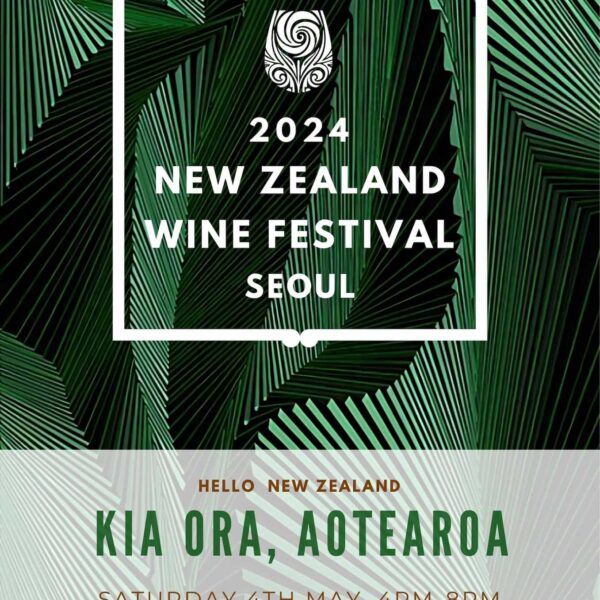Living History: 20 Ways to See Korea as it Used to Be
A guide to authentic history tourism in South Korea.
Words by Matthew Crawford
Shots by Matthew Crawford, Chad Geib, and Jared Zehm
There used to be an alley in Gwanghwamun lined with gritty drinking joints. Named Pi-mat-gol (or “horse-dodging alley”), it was used for hundreds of years by plebeians who wanted to escape the main boulevard and the obligation to bow to every nobleman that rode by. The drinking joints were run by tough ajummas who served snacks like scallops and roasted quail, to be washed down with cups of hot jeongjong (a drink similar to sake). The jeongjong was brought to the table with a blue flame on top.
After a visit to Pi-mat-gol one day, I said offhandedly to a friend that the day the alley was ripped down would be the day I left Korea. Fatefully, a few months later the whole block had been turned into a construction site. (The construction project, located next to the Kyobo Building near Gwanghwamun Square, remains underway.)
It’s tempting to complain about the loss of places like Pi-mat-gol, but this sort of complaining—if taken to its logical conclusion—would end in demands that people go back to wearing clothing made from hemp, smoking long pipes, and watching acrobat performances instead of blockbusters. Opting for comfort, convenience, and a higher quality of life, South Korean society has chosen to leave behind certain things and to adopt certain others. So goes the story of modernization everywhere.
Attitudes and levels of awareness are changing though. Having achieved most (or even all?) of its development goals, South Korea is becoming intensely concerned with its cultural heritage. One of new president Park Geun-hye’s three promises when she was sworn into office was to bring about a cultural renaissance.
As local citizens come to realize that timeless traditions have been replaced by passing fads, waves of nostalgia ripple through the society. One example is the “makgeolli boom,” with the younger generation now enjoying bowls of the milky white libation that used to be the drink of old men. Another is the revitalization of traditional hanok housing in areas like Bukchon; not so long ago, these beautiful buildings were falling into decrepitude. In many other realms as well, the endangered past is making a comeback.
But while there is no shortage of artifacts, museum pieces, recreations, and reenactments in South Korea, travelers will also find strains of the living past in forgotten pockets of the cities and in the forgotten depths of the countryside. While some of the places, practices, and performances in the list below are bound to become mere memory traces, like Pi-mat-gol, it’s equally guaranteed that some will astound future generations with their staying power.
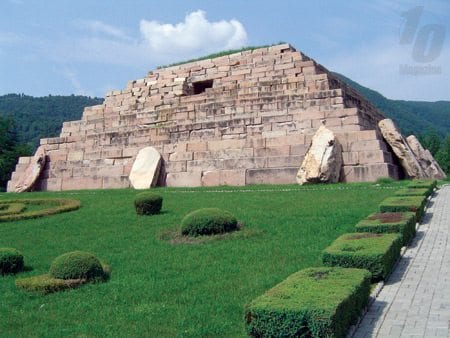
1. Goguryeo Communism Ji’an, Jilin, China
Behind the communist veneer, daily life in North Korea remains quite traditional compared to the South. The rejection of Western culture means that many people still wear hanbok clothing and that kids still have fun through activities like ice sledding. Visit a North Korean border area in China, like Dandong or the Korean Autonomous region, and you’ll find that North Korean culture and its dated ideology can be experienced in the Middle Kingdom. There is also the border city of Ji’an. This city has its own place in Korean history, as King Yuri of Goguryeo founded Gungnae Fortress here near the start of the Christian calendar. Having served as the capital of the Goguryeo kingdom, Ji’an’s Korean heritage now includes a set of royal tombs and North Korean restaurants.
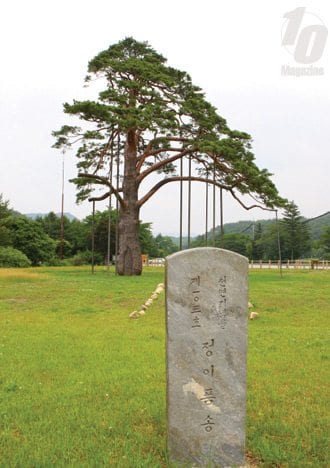
2. Branches of History The Jeongipum Pine
Visitors are advised to greet this particular tree with due reverence and upright decorum. The Jeongipum Pine is one of many famous old trees in Korea and it also happens to be a government minister (of an expired dynasty). According to legend, this quincentenarian pine lifted its branches for King Sejo of Joseon as he was passing by in 1464. For this act of respect (or flattery?) it received the title of “jeongipum.” You can glimpse this living legend on a W160 postage stamp issued in 1993, or you see it in person near the entrance to Songnisan National Park in North Chungcheong Province. An audience with the tree is best followed by a visit to Popchu Temple and a hike in the park.
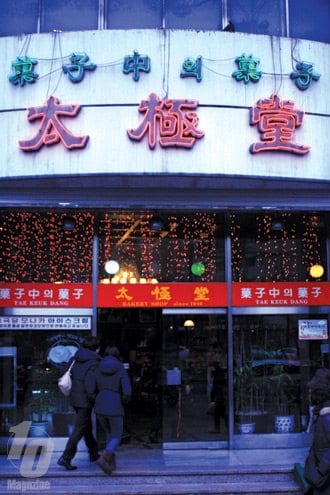
3. Petrified Pastries Taegeukdang Bakery
One way to gauge the age and authenticity of a Korean interior is to look for ornamental rocks. The more of these sometimes-graceful, sometimes-grotesque stones you see around you, the further back you’ve stepped into the old Korea. In the Taegeukdang bakery, located in the central Seoul neighborhood of Jangchung-dong, there is not only an abundance of ornamental rocks, but also cave formations and 10-year-old goldfish. Founded in 1946, two years before the Republic of Korea achieved full independence, Taegeukdang is approaching its 70th anniversary. Besides the shelves of indigenous bakery creations, there is a coffee shop serving traditional teas (팥빙수), red-beans on shaved ice (), and other items. In a country where fortunes and trends are constantly shifting, it’s good to see that the Taegeukdang is as popular as ever.

4. Prehistoric Dining Whale Restaurants
No one really knows how many thousands of years ago prehistoric Koreans mustered the technology to carve the Bangudae Petroglyphs, an enormous tangle of drawings above a small stream in South Gyeongsang Province. Follow this stream to the Taehwa River and you’ve entered the port city of Ulsan, where the technological miracles of Hyundai created the South Korea that we’re familiar with today. One of the interesting aspects of the petroglyphs is their depiction of whale hunting. In the Ulsan neighborhood of Jangseungpo, a row of whale restaurants still caters to locals and Japanese tourists, serving various cuts of minke whales that “accidentally” expired in fishermen’s nets. Though it may require a reshuffling of your dining ethics, a trip to one of Ulsan’s whale restaurants is a coastal eating experience that stretches back to the Stone Age.
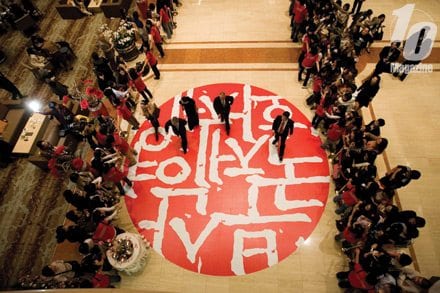
5. Golden Age BIFF’s Korean Cinema Retrospective
If you’ve ever paid a visit to the neighborhood movie rental shop, you may have noticed that the shelves are overloaded with new arrivals. But what if you wanted to watch Korea’s first taekwondo action flick, Manchurian Tiger (Yonghodaelyeon, 1974)? Or Yonggari, Monster from the Deep (1967), the Korean version of Godzilla? Of the few venues where you can experience classic Korean cinema, the best one may be the Busan Film Festival (BIFF), held every year in the first half of October. The “Korean Cinema Retrospective” section of the festival routinely features films that have never been released on DVD and shows them with English subtitles. When the curtains go up, visitors have a chance to interact with living legends like director Im Kwon-taek during guest visit events and question-and-answer sessions.

6. Bloodless Bullfights April Event!
It seems appropriate that a form of bullfighting said to have originated during the apex of Korean Buddhism is much gentler than the contests Hemingway wrote about. The sport is also a reassuring example of a village tradition that is making a comeback. At a Korean bullfight, there is no matador in sight. Instead, you see a succession of horn to horn match ups. While the bulls are grappling, their owners stand back and shout support and some of the audience members engage in monetary speculation. The sparring matches are decided non-fatally when one of the beasts turns tail and retreats. See the bulls in action at this year’s bullfighting festival in Cheong-do, which takes place from April 17th to 21st. www.청도소싸움.kr

7. Matrons of the Deep Haenyo
Swimming free of the boundary ropes and official dates that limit the beach experience for most Koreans, the haenyo, or “women of the sea,” can still be found on Jeju and several islands off the south coast. On Jeju, haenyo often dive near the volcanic crater of Seongsan Ichulbong. A less-known preserve of haenyo is Cheongsan Island, near Wando. At around 10 in the morning, the haenyo gather at the main harbor to stretch into black rubber diving suits until only their wizened faces are exposed to the elements. After suiting up, a motorboat shuttles them along the coast as they leap off one by one with a net and prying tool in hand. Exercising their lungpower and physical stamina, the women free-dive for abalone, sea cucumber, and other fruits of the sea until the midafternoon, when their shuttle boat returns. In recognition of the haenyo, most of whom are in their 50s and 60s now, the area has been granted Cittaslow status by an Italian movement for the preservation of traditional ways of life.
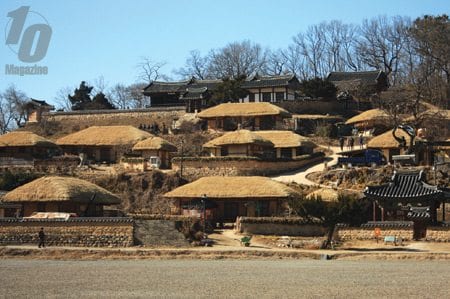
8. Rustic Literati Yangdong Village
Past victims of choreographed tourist spectacles may be alarmed by the huge parking lot and the ticket booth at the head of Yangdong Traditional Village (양동 민속 마을). After that, one discovers an instant coffee stall named Yangdong-Bucks. Brush the doubts aside, though: this is a living yangban village founded in the early part of the Joseon Dynasty. (The yangban, or literati, were the highest class in old Korean society.) Most of the tiled and thatch-roofed houses of Yangdong are still occupied and, jointly with the Hahoe Folk Village, Yangdong has been proclaimed a UNESCO World Heritage Site. Seekers of Old Korea will enjoy strolling along the hilly lanes of wind-rustled bamboo, observing how satellite dishes and other signs of the 21st century are balanced by blocks of fermented bean curd hanging from the eaves.

9. Spices of Life Daegu Oriental Medicine Alley
Most retail businesses in South Korea wouldn’t bear much resemblance to their equivalents from 1658. That was the founding year of the Daegu Oriental Medicine Alley (약전 골목), a long street of apothecaries, wholesalers, and merchants, and a place where little has changed in the intervening years. While the dried herbs are sealed in plastic rather than wrapped in paper now, deer antler bouquets still hang from the ceilings above white bundles of ginseng root. Perhaps the greatest pleasure of this aromatic street is the opportunity for window browsing, with medicaments like sulphur, dried seahorses, and corn husk beards on display. Visitors may also want to tour the Oriental Medicine Museum before stopping by the Central Oriental Medicine Shop (중앙 한약방), founded in 1926.
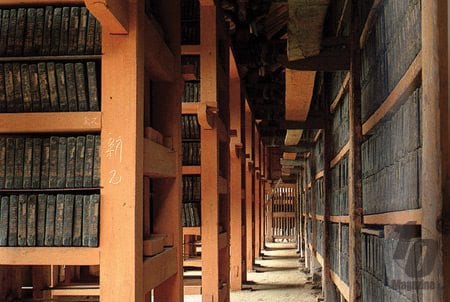
10. Good Copy The Tripitaka Koreana
The bus from Daegu to Haein Temple drives beside a stream with calligraphy-covered rocks. This is a mere preview of the 50,000,000 Chinese characters preserved in the temple library. Haein Temple is famous for the Tripitaka Koreana, a woodblock collection of Chinese Buddhist texts that has been stored here since 1398. This is not the original set, which was burned during the Mongol invasions, but a replacement carved several years later under apocalyptic conditions. Of particular interest is how the original storage structures have kept the woodblocks in fine condition over all these centuries. To prevent further duplication of the Tripitaka, photographs of the treasure are strictly prohibited. There is also a Theme Park of the Tripitaka Koreana that has been erected nearby. Look for the woodblock mascot.
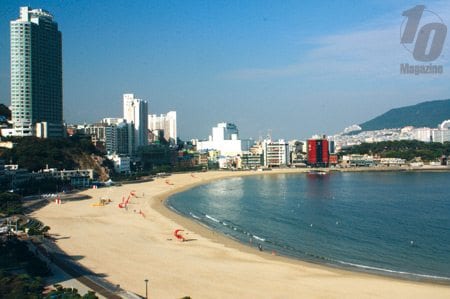
11. Recreation of the Past Songdo Beach
Though Haeundae Beach was featured in a movie and has set world records for crowdedness, the lesser-known Busan beach of Songdo holds the distinction of being Korea’s first beach used for modern recreation. Songdo began to be used for recreational purposes—as opposed to the mooring of fishing vessels—in 1913, when members of the Japanese community used it to test provocative new styles of bathing costumes. Centrally located (it’s separated from Busan Station by a hill), Songdo is petite compared to Haeundae, and it offers a view of container ships, mostly. The beach is a perfect crescent, though, and the sand is composed of fine beige particles. Originally an island and even sporting a cable car system during its heyday, Songdo was later connected to the mainland through a land reclamation project.

12. Preserved Pavilions Samcheonggak
A hint of melancholy still pervades the air at Samcheonggak, a preserve of pavilions and pine trees on the flank of Seoul’s Bugak Mountain. The information signs don’t mention that Samcheonggak began in 1972 as a pleasure house staffed by kisaeng, a class of well-cultured courtesans who no longer exist in South Korea. Originally only for officials from the highest ranks of the Park Chung-hee government, Samcheonggak has since 2001 been open to the general public as a venue for various functions and traditional performances. The main structure, Ilhwadang, has a restaurant and teahouse with a great view. A free shuttle bus to Samcheonggak leaves every hour from major tourist sites around Gwanghwamun.
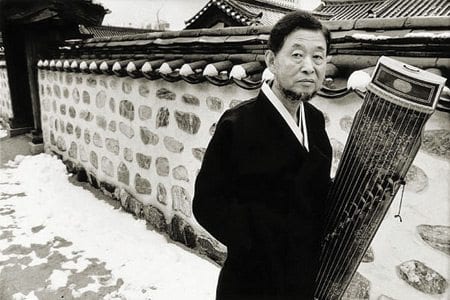
13. Elder Statesman of the Zither Byungki Hwang
Like B.B. King with the electric guitar and Ravi Shankar with the sitar, Byungki Hwang’s name has become inseparably linked with his instrument, the gayageum. The 77-year-old musician is admired for preserving traditional musical forms while also developing them in unlikely new directions. The gayageum is a long plank-shaped instrument with 12-strings, and it can only be played while sitting. In the hands of Byungki Hwang, it’s used to compose intricate soundscapes that induce a sense of calm attentiveness. Hwang performs several times a year at venues like the Seoul Arts Center, where the tickets sell out faster than a flourish of gayageum notes.
14. Andong Unmasked
Several provinces removed from Seoul, Andong is South Korea’s capital of traditional culture. Andong city is best used as a purchasing point for fiery local soju and as a gateway to the surrounding countryside, where you’ll find the Confucian academy of Dosan Seowon (도산서원), Korea’s oldest wooden structure at Bongjeong Temple (봉정사), and the living folk village of Hahoe (). This is also the region where the wooden masks sold in Itaewon and Incheon Airport are still worn in local mask performances called talchum (탈춤). Performances are free and take place every Wednesday, Saturday, and Sunday at 2 p.m., from March to December, at the folk village. At the end of September, Andong also hosts a one-week festival featuring regional variations of the mask dance. In most of its versions, the drama expresses a sense of frustration with the Korean upper crust that is still very much in evidence today.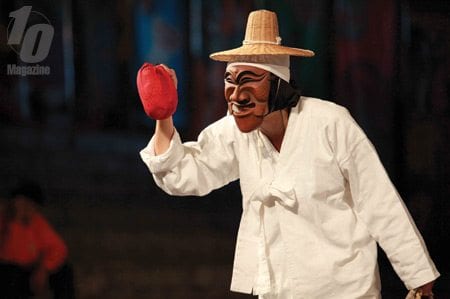
15. Mani Stones Shamanistic Shrines
The worship of high peaks is an impulse connected with the misty origins of human culture. In Korea, the founding of the race began with the heavenly landing of the god Hwanung on a mountain, though the location of the mountain in question is disputed. Scholars posit that the sacred mountain may have been Mt. Myohyang or Mt. Baekdu in North Korea, while in the South there are altars to Dangun (the earthbound son of Hwanung) on Mt. Mani on Ganghwa Island and Mt. Taebaek in Gangwon Province. Every 3rd of October marks the anniversary of the mountain landing, National Foundation Day (개천절), with ceremonies conducted at Chamseong Altar (참성단) on Mt. Mani and Cheongwang Altar (천왕단) on Mt. Taebaek. The rituals are a vestige of the shamanistic beliefs that predated the Buddhist swastikas and neon crosses that take precedence today.
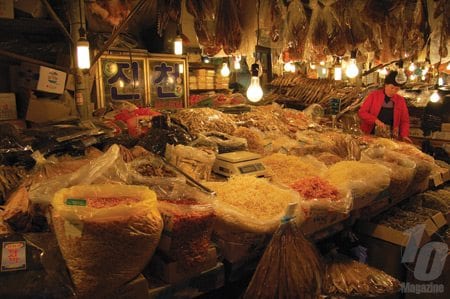
16. Take Five O-il-jang
A Korean five-day market is as intoxicating as a Middle Eastern souk. The phenomenon dates back to the early Joseon period, when permanent markets in the countryside were banned. At this time a special group of traveling vendors was allowed to travel around to different towns, showing up on special market days. Nowadays the five-day markets, or o-il-jang (오일장), draw country folk into the towns, where they use the sidewalks as colorful display counters; many are old grannies who have been following the market cycle for a lifetime. O-il-jang are found throughout the countryside and in some urban centers, and there are some famous ones like the market of Jeongseon (정선) in Gangwon Province. Jeongseon’s five-day market attracts not only produce and herb vendors but bizarre entertainers as well. It’s held on any day ending with a two or a five.

17. Tunnel of Love for the War Dead Haejeo Tunnel
Described by eyewitnesses as a leaky concrete tube, the Undersea (Haejeo) Tunnel (해저터널) of Tongyeong may not be a star attraction, but it certainly has historical novelty value. In 1592, during the Seven Year War, a unit of retreating Japanese soldiers buried themselves in a mud flat for protection, only to perish when the tide came in. About 340 years later, the spot had become permanently covered by the sea, with a bridge standing over it. However, Tongyeong’s colonial mayor, a Japanese man named Yamaguchi, was infuriated that Koreans were walking above the remains of Japanese war heroes, and conceived of a plan to replace the bridge with a tunnel. The project was finished in 1932, making it the first undersea tunnel in Asia.
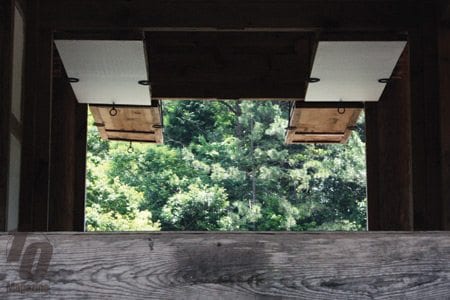
18. Makgeolli Gardens
One of the greatest poets in Korean history, Yun Seondo, was born in 1587 in present-day Marronnier Park in Seoul, but his spirit probably resides in his garden on Bogil Island in South Jeolla Province. Like most of the government officials of his time, he had a wild ride on the wheel of fate, opting for an early retirement as far from the capital as possible. The result of his search for peace and quiet is the still-delightful Yun Seondo Garden, with its antique pavilion, boulder-laden pond, and shady hanging branches. Another Joseon garden still in use today is Soswaewon (소쇄원), near Gwangju. It too is the happy product of scholarly frustration, built by Yang San-bo about 500 years ago. These days, the gardens attract far more photographer types than drunken poets.
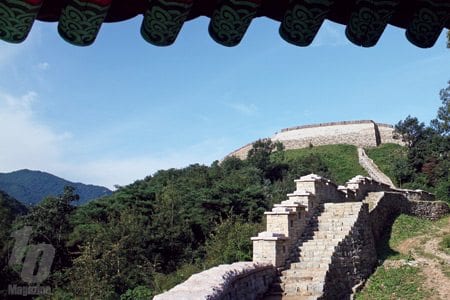
19. Lost Highway Mungyeong Saejae
Travelers bound for Seoul from Busan usually don’t consider going the route of the old highway, 360 km on foot from Busan to the famous pass of Mungyeong Saejae (문경새재) – which could be loosely translated as Mungyeong Pass of High-Flying Birds. Of the three roads to Hanyang (the old name for Seoul), this was the one taken by hopeful challengers of the government exams, since the other two had unlucky names. The huge gates of the pass still stand and 6.5 km of the original road, some of it along a steep riverside cliff, is still hikeable. This is also the site of a mountain fortress which can be explored with sturdy footwear. Unfortunately, however, the inn that once served homebrewed rice wine to weary journeyers stands now only as a showpiece.
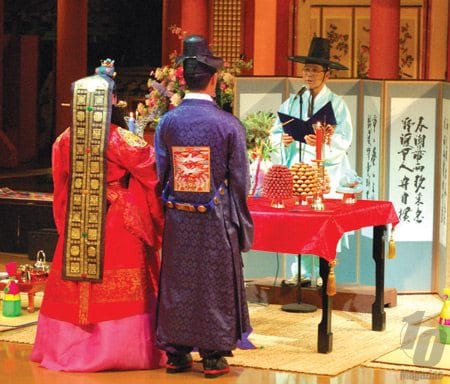
20. Marriage Outside of the Box
Though this article has been trying to avoid tourist spectacles and self-conscious recreations of the past, we now must step inside South Korea’s most-visited folk village in Yongin for their traditional wedding services. In stark contrast to the big-box wedding halls that have ushered in an era of speedy, hyper-efficient unions, a folk village wedding follows the rules of a Joseon ceremony. This means that the bride and the groom must bow to each other more than a dozen times before finally leaving in a palanquin (the bride) and on a horse (the groom). Traditional weddings also take place under the shade of two enormous gingko trees at the Confucian academy of Sungkyunkwan in Seoul, in the Gwanghallu Garden of Namwon, and at other culture-steeped locations throughout the country.
Matthew Crawford burst upon the Seoul writing scene in 2003 with an article about a Korean jazz legend written in a smoky PC bang. He has been writing about living history for 10 Magazine since 2009.
Smell This
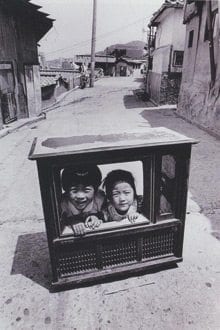
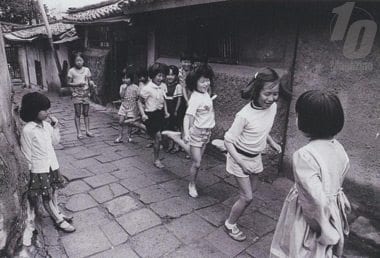
I came to Korea in 1970 as a Peace Corps Volunteer to teach English at a middle school in Wonju, Gangwon-do. One early impression of Korea was of a real black-and-white world, from the photos to the uniforms to even the landscape in winter and early spring. The shift from monochrome to the vivid colors of today’s Korea seems to be an apt metaphor for the changes that the country has undergone in the 40 years since.
These sights can be shown in pictures, movies and the like. Similarly, the sounds of that time can be preserved on tape. But what about smells? Marcel Proust wrote about how the sense of smell is the most evocative of things remembered from the past. Would you want those smells preserved?
In February 1970, stepping off the plane at Kimpo Airport, walking across the tarmac to the terminal, our Peace Corps group was greeted by an overwhelming stew of aromas and smells. Cooking doenjang jjigae, kimchi, and fish would account for a lot of the pungency. However, the most overpowering smell would be that emanating from the night soil spread over the rice paddies and fields of cabbages and turnips. This was human excrement collected from the toilets, which would then be poured into holding pits to be ladled onto the crops as fertilizer. Chemical products were much too expensive.
There are countless tales of Peace Corps volunteers slipping into the sludge piles lurking in the “W.C.”. Often the facilities consisted of just a few boards placed over a pit with a hole to squat over. One legendary tale involved a volunteer who slipped in up to his waist at a bus station. Having no change of clothes, money or time, he had to board the bus as is. By the time he reached home, everyone in the bus had bailed out, while the bus driver survived only by sticking his head out the window.
Fortunately, modernization would eliminate this threat to our olfactory nerves, as the ‘88 Seoul Olympics would raise the rallying cry of a “New Toilet Culture.” As for toilet paper, well, that’s a subject for another day. Newspaper would commonly serve the purpose, so you can read all about it in the next edition.


